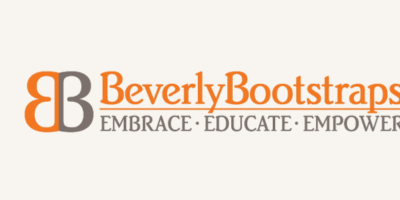Virtual Reality media is opening new and creative opportunities for different industries across the globe. From government trainings to medical procedures, VR is allowing businesses to enhance their operations while embracing a new wave of technology. Below, we take a look at how 7 industries are utilizing VR.
Military
In the Military, VR is primarily used in trainings and simulations to ensure individuals are experts in their field. In a recent article by Forbes, former Army Pilot and Master Aviator for Black Hawk Helicopters, Mike Durant, talks about how VR is streamlining the maintenance of military equipment. Mike explains how his company, Pinnacle Solutions, created a virtual maintenance trainer to help train users on maintaining Black Hawk Helicopters. His virtual maintenance trainer allowed users to practice on the simulator before they worked on the actual helicopters.
“Mike’s virtual reality trainer was an elegant solution that solved all of the challenges with training maintenance crews around the globe. It allowed for training down to the nuts and bolts without compromising expensive assets, sidestepped the language barriers with visual learning, and removed time zone conflicts.” Lewis Schiff, How Mike Durant Transformed His Battlefield Experience Into Virtual Reality For The Military
Having VR trainings in place in the Military is helping save not only time but resources as well. Check out the video below created by TheDaily that shows how the U.S. Military is utilizing VR for their trainings!
Government
From a Government perspective, VR is being utilized to prepare for disasters such as hurricanes, tornados, fires, active shooters, etc. Just like the Military, VR offers government employees simulations and virtual trainings to prepare for dangerous situations before they happen. Virtual training helps train large numbers of employees at once to help streamline on-boardings and regular trainings.
Virtual Reality is also helping government development teams visualize new and improved types infrastructure from highways to bridges and public transport. Having VR in place when planning for environment and infrastructure gives officials the advanced tools they need to build communities for the future.
The video below demonstrates how firefighters are using VR during their trainings allowing them to feel as thou they are fighting a real fire. This type of simulation helps train firefighters without any added risks.
Retail
VR for retail has yet to become mainstream but we see it coming in the near future! As retailers soon adapt to virtual commerce, we will soon start to see engaging promotions and even complete virtual stores. On January 2nd, 2018 Amazon patented ‘Blended-Reality Systems and Methods’ which is a VR mirror that allows users to try on clothes virtually. The mirror works by generating a blended reality view to a user by combining images reflected by a mirror with images transmitted from a screen behind the mirror.
Recently, we’ve seen Augmented Reality become a popular feature of retail shopping. One company that is using AR is IKEA where shoppers can visualize what furniture will look like in their homes. Users can download their app, shop for their furniture and then see what it would look like in their home right through the app. This new technology helped boost IKEA’s slow eCommerce sales.
Real Estate
When it comes to purchasing property, Virtual Reality can be beneficial to both the seller and the buyer. Virtual property tours have become almost necessary in order to provide the buyer with a modern experience and to keep up with competition. Buyers can virtually visit dozens of homes from different locations from the comfort of their own home.
Virtual Staging has become a great way for sellers to market their properties as well. Staged properties can help the seller give a vision of furniture inside the home which is a great selling point for the buyer. Compared to normal house tours, most homes are empty but virtual staging provides a unique way to market the house for potential buyers.
VR can also help communication between landlords, tenants, hosts and renters. Landlords can give virtual instructions to the tenant such as information about utilities, parking, etc. Another example of this is on Air BnB where some hosts provide virtual instructions for their guests
Tourism
The tourism industry has become extremely interactive over the past several years and VR is a huge reason for that. Buyers can now book a flight, view their hotel room, and check out attractions all through Virtual Reality. An innovative experience that Google created in 2011 is their Arts & Culture platform. This platform enables users to virtually tour partner museums’ galleries, explore information about artwork, and compile their own virtual collection.
Medical
In the medical field, Virtual Reality is helping not only doctors and nurses but are helping patients as well. To help calm patients nerves before or during a procedure, some hospitals are now offering patients a VR head set instead of anesthesia and sedation. This helps patients who suffer from extreme anxiety and stress at hospitals who may not want to take or cannot take certain medications.
VR also helps patients by giving them a better understanding of their surgical procedure by allowing doctors to virtually show them the work that will be done. Virtual appointments are also becoming extremely common now where patients can call their doctor and get diagnosed over the computer. This is a safe way to diagnosis a patient who may be contagious.
Construction
VR in construction is being used through 3D modeling, virtual site visits and safer training for workers. Utilizing Virtual Reality in construction is beneficial for not only the workers but the customer as well.
Construction workers and designers are now using 3D Modeling to show a detailed representation of a project. It also shows the clients and the workers what the finished work will look like so workers can avoid them saying “It doesn’t look like what I imagined!” A client can know exactly what it looks like before the project is started and changes to the plan can be done easily.
VR also helps workers and customers with remote site visits. Virtually checking in on a site can help clients and workers view the progress on their construction site. This comes in handy if individuals are not able to visit the site frequently and can view the project at any point of the day.
Lastly, just like the other industries, Virtual Reality can be effective for training workers. Construction workers can learn how to operate heavy equipment such as cranes, drills, etc all through a virtual training or simulation.
Looking to incorporate Virtual Reality into your business?
We hope this blog post provided you with some of the creative ways that different industries are utilizing VR for their business. If you are looking to add an interactive element to your business, check out our Virtual Reality services by clicking below!
Related articles
Redesigning with Purpose: New Website for Beverly Bootstraps
Discover how we designed a modern, accessible website for Beverly Bootstraps to support community programs, donations, and more!
Digital Hub for Northeast Arc’s eCommunity Connections Website
Northeast Arc teamed up with GraVoc to develop a new WordPress website for eCommunity Connections, featuring enhanced navigation and an intuitive, user-friendly design.
Website Design and Online Booking System for All Sports Center
Discover the sleek, user-friendly website we designed for All Sports Center—making it easier than ever to explore programs, book sessions, & stay updated on all things sports.




